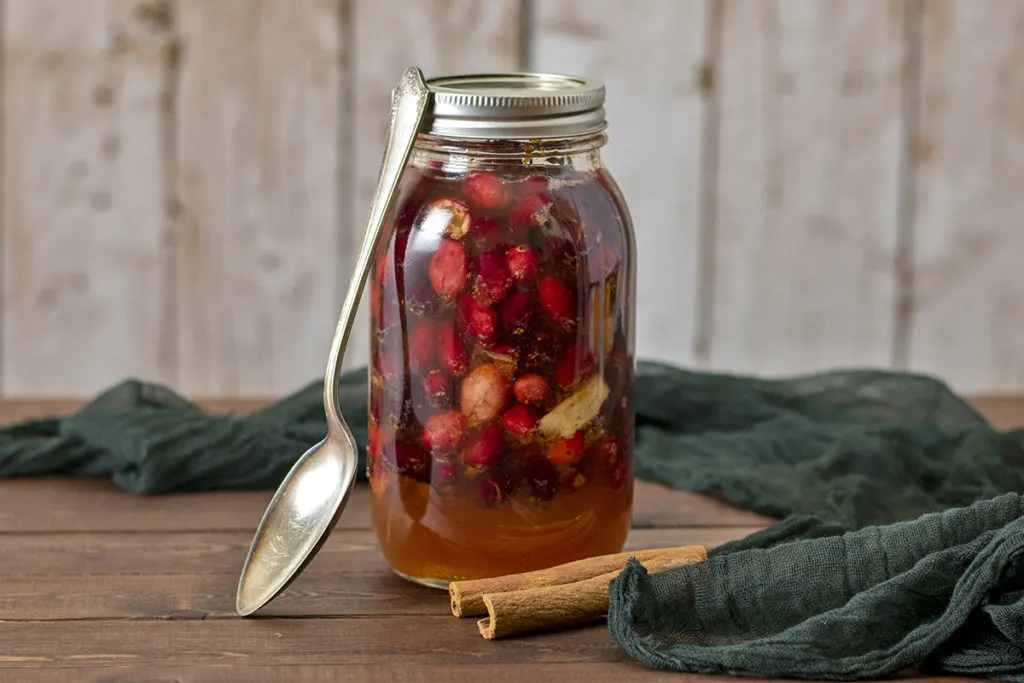
Very soon, we’ll gather with our families to give thanks for all the good in our lives. We’ll gather around the table and consume a meal that took hours to make and weeks to plan in a matter of minutes.
Am I the only one screaming, “Slow down, this took forever to make,” in my head during Thanksgiving dinner?
Whether you come from a large family or a small one, or even a Friendsgiving, there’s always one dinner guest that no one wants to be responsible for. It’s the dinner guest that some of your family members just love, and others can’t stand.
And yet this dinner guest gets invited back year after year, without fail.
Because let’s face it, Thanksgiving wouldn’t be Thanksgiving without cranberry sauce.
Oh, wait. Did you think I was talking about that one cousin that drinks too much and loudly fills everyone in on the latest conspiracy theory they’ve uncovered?
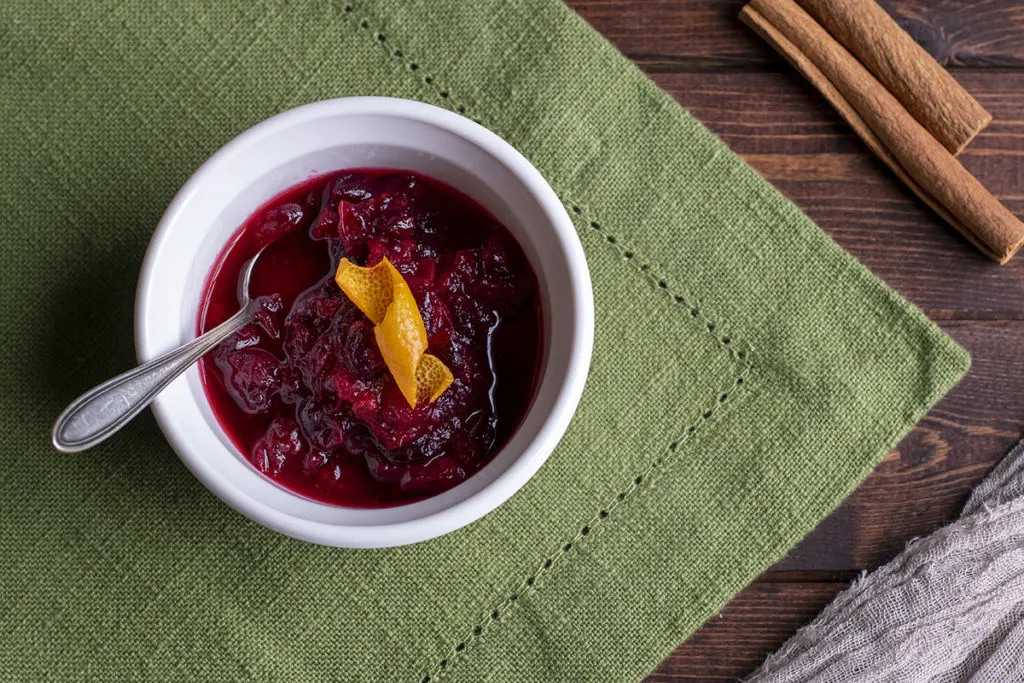
Why is cranberry sauce always an afterthought?
Cranberry sauce always seems to be an afterthought at most holiday tables. It gets invited back year after year because it’s part of the Thanksgiving dinner tradition. And often, it’s the only color on a table full of neutral-colored food.
But this tart side is often overlooked or altogether forgotten.
One Thanksgiving, when bringing all the dishes of food out to the table, we forgot the cranberry sauce. It sat on the kitchen counter unnoticed until later when we were cleaning up.
Just try and get away with that with the mashed potatoes.
A few years ago, I vowed to figure out a way to make one of my favorite Thanksgiving sides more appealing to the family. Over the last several holidays, I’ve tried fancier and fancier recipes with varying degrees of popularity.
In the end, the solid tube of cranberry sauce slid straight from the can always seemed to end up on the table as well. So, I gave up.
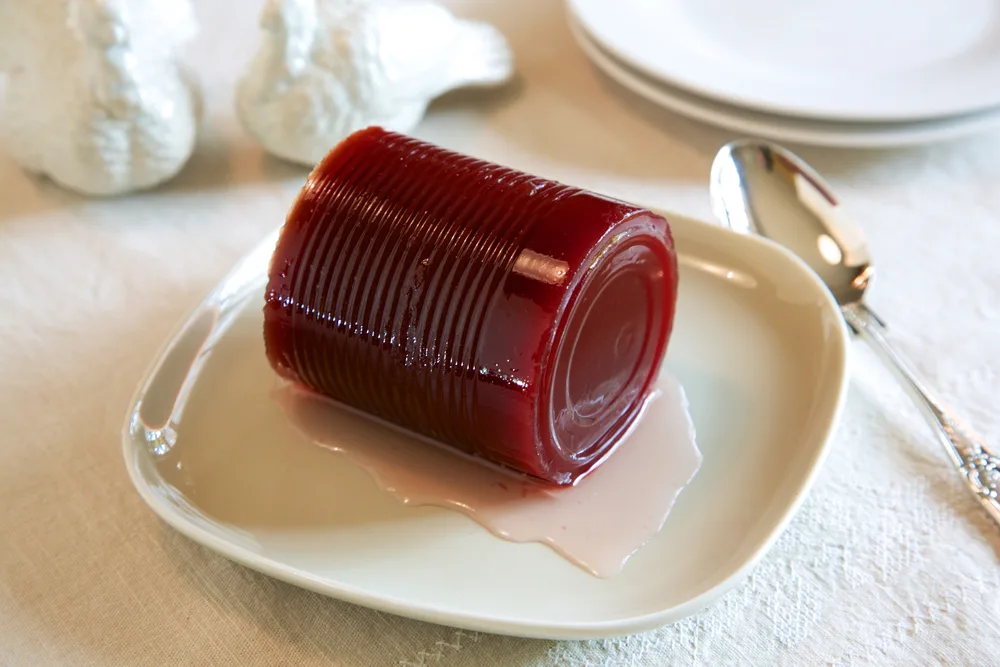
That is until last year.
Enter the charming Colleen of Grow Cook Forage Ferment. I follow her on Instagram (you should too), and last year she had a post about honey-fermented cranberries. I’m sure you all know by now that I’m a big fan of fermenting with honey. So, I hopped on over to her blog to check it out.
I knew I had found the answer to my cranberry sauce dilemma.
I used Colleen’s honey-fermented cranberries as a jumping-off point to create a bright, citrusy sweet, and tangy cranberry sauce. It was so delicious that it charmed even life-long cranberry sauce haters to add a helping to their plates.
And the most amazing part – I made such a huge batch that I had plenty to serve at Christmas too. It was twice as good because it had been fermenting longer. I ate this batch of fermented cranberry sauce well into February before I finally finished it.
After the cranberries were gone, I still had plenty of cranberry-infused honey left.
I used it for mixing up cocktails, giving tea a sweet and tangy boost, drizzling over my morning oatmeal, or in a smoothie. Trust me; you’ve got to try making a Cosmopolitan with the cranberry-infused honey.
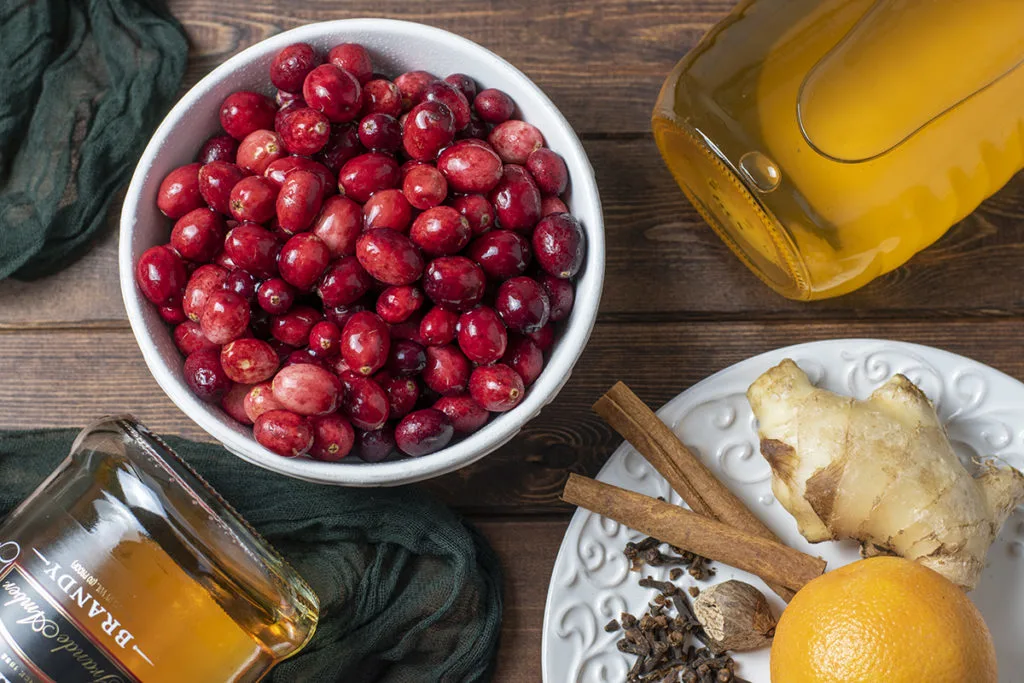
Why fermented cranberry sauce?
I love this cranberry sauce because it’s a living, fermented food. For most of us, Thanksgiving is actually about being thankful for elastic waistbands.
Adding this fresh and zippy side full of probiotic, good-for-your-gut bacteria to a seasonally heavy meal made my tummy much happier at the end of the day. (I still slipped into my traditional turkey coma, but at least I didn’t feel like one of the balloons from the Macy’s Thanksgiving Day parade when I did so.)
How long does it take?
This cranberry sauce is ready to eat in about ten days. However, as I mentioned above, the more time you give it, the better it will taste. If you can give it a full two weeks, go for it.
Double the recipe and use a half-gallon jar, and you’ll have enough fermented cranberry sauce to get you through all of the upcoming winter holidays.
A note about botulism in honey
I always see this concern pop up in the comment section on social media, so I thought I would address it. Yes, you will sometimes see scary headlines stating you can get botulism from honey. That’s the media for you. But by informing yourself, you’ll see we can easily overcome this concern.
When it comes to botulism in honey, we only need to be concerned with two kinds – infant botulism and foodborne botulism.
Infant botulism via honey is the easiest to prevent, and sadly, the most common. Infants under one year of age should never eat honey. Period. These days, most parents leave the pediatricians after their first visit with a long list of foods not to give infants under a year old, and honey is always on that list.
And as for foodborne botulism, it only takes a small amount of digging to see how rare any kind of botulism is, let alone foodborne botulism. The CDC lists annual confirmed botulism cases going back to 2001. You will see that annually there are around 200 or fewer botulism cases reported per year in total – that’s infant, foodborne, wound, and ‘other’ forms of botulism.
Of those cases, foodborne botulism makes up around 25 cases or fewer per year.
Judging by one report, convenience store nacho cheese is more likely to give you botulism than honey.
Still not convinced that fermenting in honey is safe?
Grab a pack of these handy pH test strips. Why? Because botulism can’t grow in an acidic environment. The World Health Organization states that botulism spores cannot grow at a pH of 4.6 or less.
Honey can vary in acidity between 3.4 to 6.1, but it averages a pH of around 3.9. That’s good news for us.
Use your pH test strip to test the acidity of your honey. If by chance, you do get a jar of honey that has a pH over 4.6, you can add a tablespoon of apple cider or wine vinegar to it and retest. The acid in the vinegar will get you to the level of acidity you need without affecting the taste. See? Easy-peasy.
Seriously, you have a better chance of being struck by lightning than you do of getting botulism from honey.
So, now that we’ve assuaged your fears let’s make some food!
Fresh or Frozen Cranberries
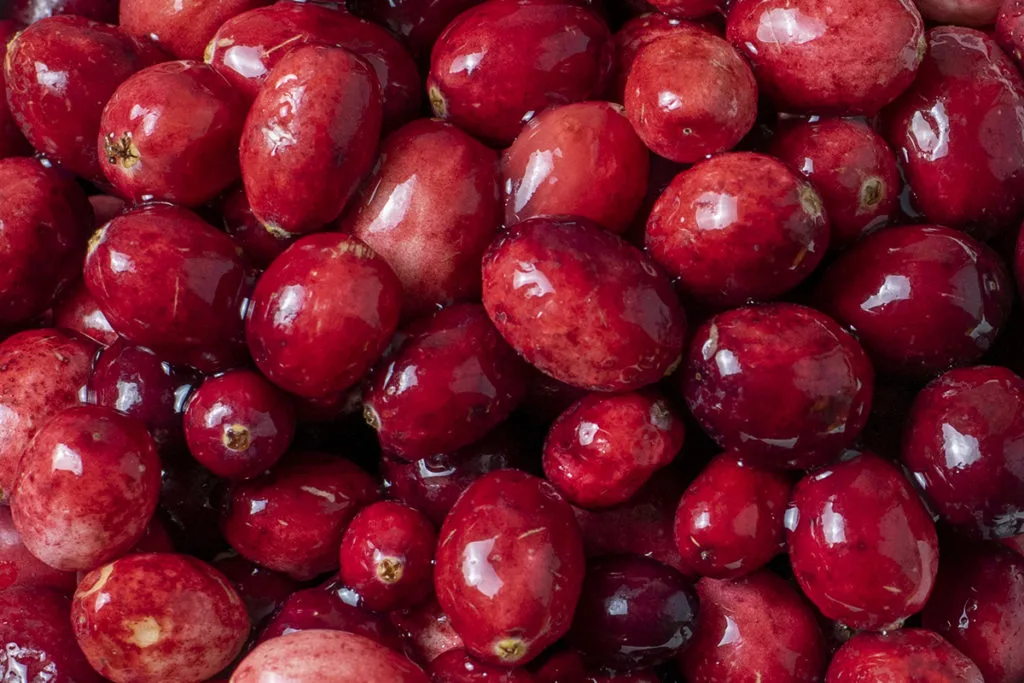
You can use either fresh or frozen cranberries to make fermented cranberry sauce. If you choose to use frozen cranberries, it’s important to let the cranberries thaw completely before adding them to the honey.
A note about fresh cranberries
Every year I patiently wait for those little bags of fresh cranberries to show up at my grocers. As soon as they do, I grab each time I go grocery shopping. Fresh cranberries are a seasonal item, and they generally disappear from grocery stores in January. But the thick skins and dense insides of cranberries make them ideal for freezing
In fact, you don’t even need to do anything special to freeze them. You can pop them in the freezer right in the bag they come in. They hold up beautifully, leaving you to cook and bake with cranberries year-round.
Equipment:
- Food Processor or one-gallon zip-top plastic storage bag
- Quart mason jar (double the recipe and use a half-gallon jar to ensure you have enough for Christmas too.)
This recipe is best done with a food processor, especially if you prefer a relish-like consistency.
We have to break open the cranberries to allow their juices to mix with the honey and start fermentation.
Colleen suggests piercing each cranberry with a fork in her blog post, but honestly, I think I’d rather poke my eyeball with a fork than go to all of that trouble. If you don’t have a food processor, skip the fork and pour the cranberries into a one-gallon plastic storage bag. Squeeze out most of the air and roll over the bag firmly with a rolling pin to squash the cranberries before adding them to the mason jar. Ta-da!
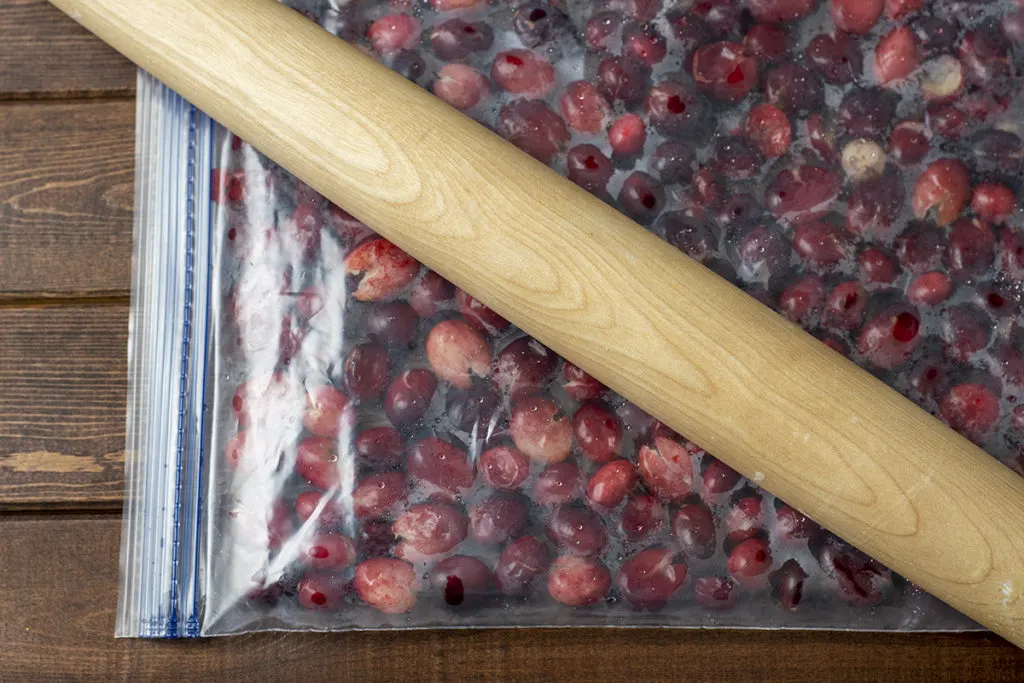
Note
I found out only after I had squished most of the bag with my rolling pin; if you pop the cranberries by hand in the bag, it’s just like popping bubble wrap – complete with that satisfying ‘SNAP‘ sound. If you’re having a rough day, I highly recommend going this route as it did wonders for my mood.
Ingredients:
- 3 cups of fresh cranberries, rinsed, bruised ones discarded
- Juice and zest from one orange
- 1 2-3″ cinnamon stick
- 1″ chunk of ginger
- 1/8 tsp ground cloves
- 1/8 tsp ground nutmeg
- 2 tbs of brandy (optional, but strongly suggested)
- 2-3 cups of raw honey
How to Make Fermented Cranberry Sauce
- Begin by sorting through the cranberries and removing any bruised ones. Rinse them and then pulse them a few times in a food processor or squash them in a zippered plastic storage bag as described above. Pour the cranberries into the clean mason jar.
- Next, wash and thoroughly scrub the orange’s skin, then using a Microplane, zest the entire outside of the orange. Cut the orange in half and squeeze the juice into the mason jar. Add the orange zest.
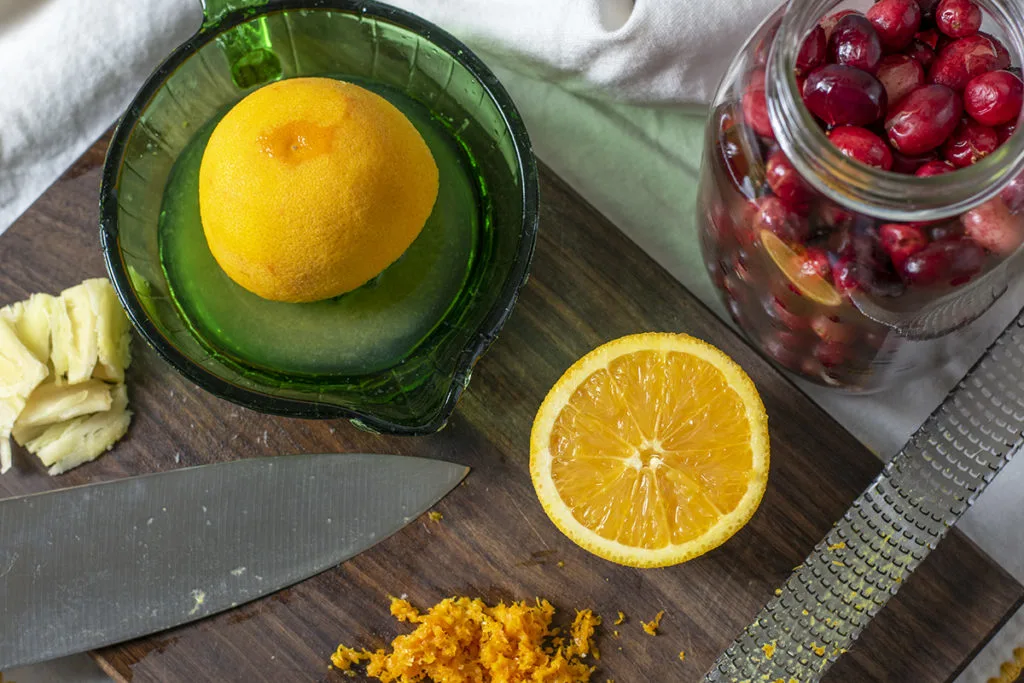
- Using a rolling pin, the flat of a knife blade, or a meat tenderizer, smash the ginger root. You want it good and squashed to help release the juices and desiccate it. Add the ginger root to the jar.
- Moving on, we’ll add the ground cloves, nutmeg, and brandy.
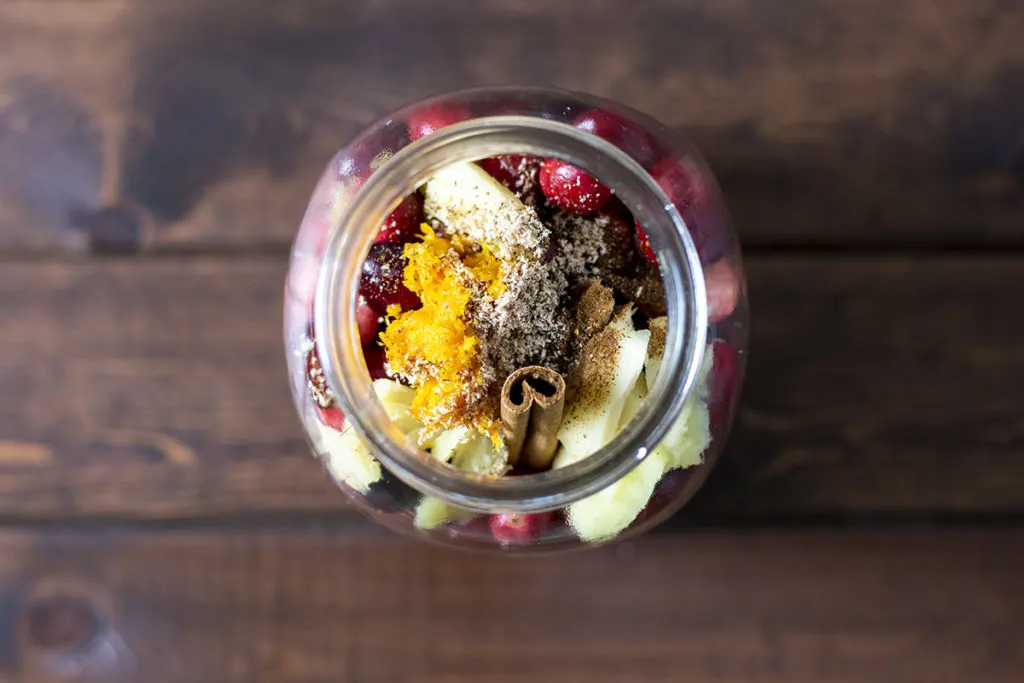
- Finally, slowly pour in enough honey to cover the cranberries. You may have to wait a moment for it to sink to the bottom and then pour more. The cranberries will most likely float on top of the honey; that’s okay; they will slowly sink over time.
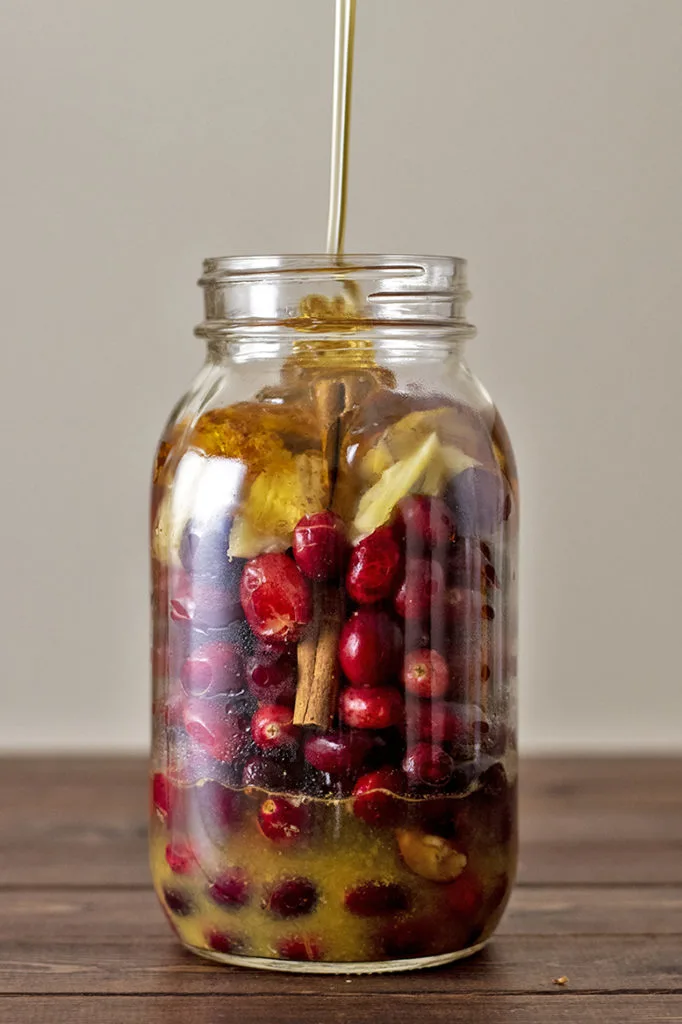
It happens every single time.
And that’s all there is to it
- Place the lid on the jar and give it a good shake, mixing the honey, fruit, and spices thoroughly.
- Let the jar sit, right side up for about five minutes to let the honey drain back down to the bottom. Loosen the jar’s lid a little and place the jar in a warm dark place like a cupboard. It’s also a good idea to set the jar in a shallow bowl or saucer to catch any over-zealous honey.
- Screw down the lid and give it a good shake whenever you think of it. Be sure to unloosen the lid again.
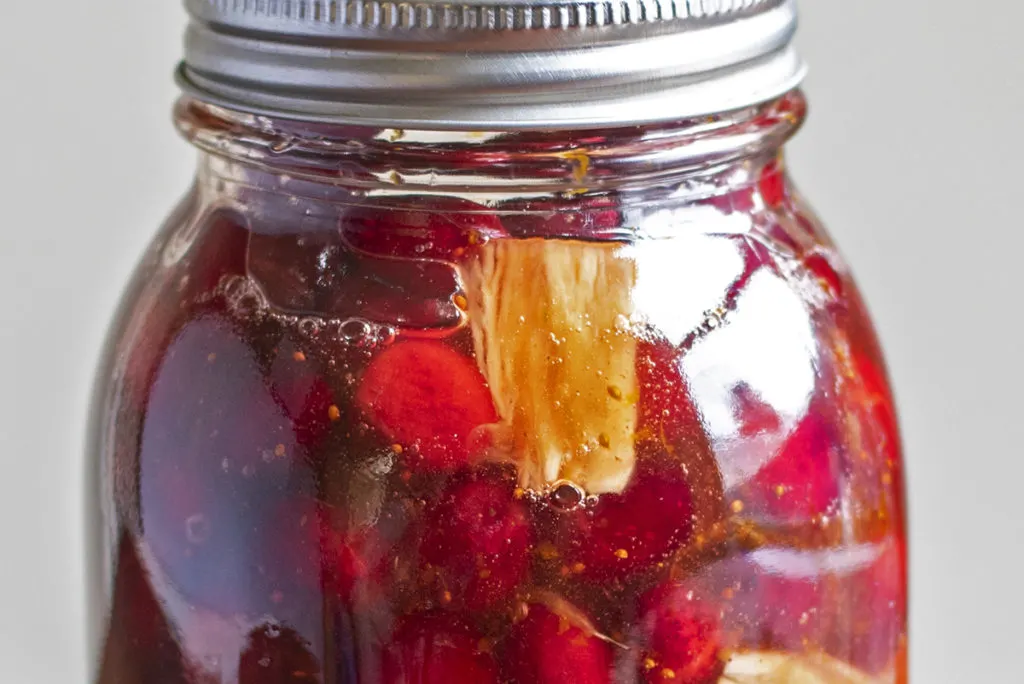
After several days, fermentation will begin, and you’ll see tiny bubbles slowly rising up through the honey. You may even notice the berries starting to sink beneath the surface of the honey slowly, the longer the mixture ferments.
This delightful cranberry sauce is ready to eat in about ten days, but it tastes better the longer it sits.
The flavors really begin to shine after about two weeks. If you plan to let it ferment longer than three weeks, remove the cinnamon stick at the three-week mark, as it tends to lend a bark-like taste to your cranberries.
You’ll notice that like all honey-based ferments, the honey thins out and becomes watery. As such, it’s best to ladle the finished cranberries into a serving dish using a slotted spoon so that much of the honey can drain off. Otherwise, you’ll end up with a pool of red honey on your plates.
Spicy Fermented Cranberry Sauce
Suppose you want to get crazy this Thanksgiving. Ditch the spices and the orange in the above recipe, and instead add the zest and juice of two limes. Then halve two jalapenos, and remove the seeds (or leave them in if you want some serious heat). Add the jalapenos along with the smashed ginger and follow the recipe as you normally would. This spicy version pairs well with cornbread stuffing.
Jellied Cranberry Sauce
If you prefer a jellied-style cranberry sauce, you can still achieve that desired texture by bringing the cranberries and honey to a rolling boil in a small saucepan. Stir it well, so it doesn’t scorch. You’ll end up with a more traditional jellied sauce. However, because you’re heating it, you’ll lose the probiotic benefits of the fermented cranberry sauce. It will still taste wonderful, though.
Brandied and Candied Cranberries
Again, if you don’t mind losing the probiotic benefits and are looking for a truly exceptional cranberry experience this year, pour your finished cranberries and the honey into a baking dish and remove the cinnamon stick. Add a third of a cup of brandy and stir it in well. Now bake your fermented cranberries in a 350-degree F oven until nearly all of the liquid has evaporated; roughly an hour. The result is a dish of beautiful candied cranberries that taste as good as they look.
You can give these bright and flavorful fermented cranberries a coveted spot on the Thanksgiving table for years to come.
And gone will be the days of cranberry sauce in the shape of a tin can. Start this easy and gut-friendly recipe today, and you’ll be well on your way to creating a new holiday tradition that’s good for you and your family.

Make a few more new Thanksgiving traditions with one of these great pumpkin recipes and don’t forget the applesauce.

Get the famous Rural Sprout newsletter delivered to your inbox.
Including Sunday musings from our editor, Tracey, as well as “What’s Up Wednesday” our roundup of what’s in season and new article updates and alerts.

